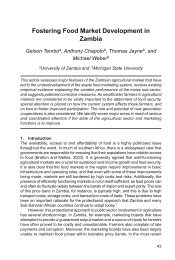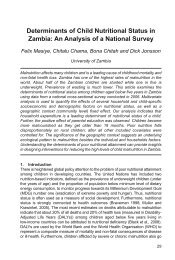Introduction to Basic Legal Citation - access-to-law home
Introduction to Basic Legal Citation - access-to-law home
Introduction to Basic Legal Citation - access-to-law home
You also want an ePaper? Increase the reach of your titles
YUMPU automatically turns print PDFs into web optimized ePapers that Google loves.
§ 1-000. BASIC LEGAL CITATION: WHAT AND WHY? [BB|ALWD]<br />
§ 1-100. <strong>Introduction</strong><br />
Contents | Index | Help | < | ><br />
When <strong>law</strong>yers present legal arguments and judges write opinions, they cite authority. They<br />
lace their representations of what the <strong>law</strong> is and how it applies <strong>to</strong> a given situation with<br />
references <strong>to</strong> statutes, regulations, and prior appellate decisions they believe <strong>to</strong> be pertinent<br />
and supporting. They also refer <strong>to</strong> persuasive secondary literature such as treatises,<br />
restatements, and journal articles. As a consequence, those who would read <strong>law</strong> writing and<br />
do <strong>law</strong> writing must master a new, technical language – "legal citation."<br />
For many years, the authoritative reference work on "legal citation" was a manual written and<br />
published by a small group of <strong>law</strong> reviews. Known by the color of its cover, The Bluebook<br />
was the codification of professional norms that introduced generations of <strong>law</strong> students <strong>to</strong><br />
"legal citation." So completely do many academics, <strong>law</strong>yers, and judges identify the process<br />
with that book they may refer <strong>to</strong> putting citations in proper form as "Bluebooking" or ask a<br />
<strong>law</strong> student or graduate whether she knows how <strong>to</strong> "Bluebook." The most recent edition of<br />
The Bluebook: A Uniform System of <strong>Citation</strong>, the nineteenth, was published in 2010. In 2000<br />
a competing reference appeared, one designed specifically for instructional use. Prepared by<br />
the Association of <strong>Legal</strong> Writing Direc<strong>to</strong>rs, the ALWD <strong>Citation</strong> Manual: A Professional<br />
System of <strong>Citation</strong> (4th ed. 2010) has won wide acceptance in <strong>law</strong> schools.<br />
Differences between the two are minor (and noted here). In the way that dictionaries both<br />
prescribe and reflect usage, so do these manuals. Both also reflect the environment of their<br />
creation – <strong>law</strong> schools with comprehensive print libraries and full <strong>access</strong> <strong>to</strong> the major<br />
commercial online legal information systems. The realities of professional practice in many<br />
settings, particularly at a time when digital distribution of legal materials is displacing print,<br />
lead <strong>to</strong> dialects or usages in legal citation neither manual includes.<br />
This introduction <strong>to</strong> legal citation is focused on the forms of citation used in professional<br />
practice rather than those used in journal publication. For that reason, it does not cover The<br />
Bluebook's distinct typography rules for the latter. Furthermore, it aims <strong>to</strong> identify the more<br />
important points on which there is divergence between the rules set out in the two manuals<br />
and evolving usage reflected in legal memoranda and briefs prepared by practicing <strong>law</strong>yers.<br />
Like other new languages, "legal citation" is easier <strong>to</strong> read than it is <strong>to</strong> write, at least at first.<br />
The active use of any language requires greater mastery than the receiving and understanding<br />
of it. In addition, there is the potential confusion of dialects or other nonstandard forms of<br />
expression. As already noted, "legal citation," like other languages, does indeed have dialects.<br />
Most are readily understandable and thus pose little likelihood of confusion for a reader. To<br />
the beginning writer, however, they present a serious risk of misleading and inconsistent<br />
models. As a writer of "legal citation," you must take care that you check all references that<br />
you find in the work of others. This includes citations in court opinions. Commercial<br />
publishers have long viewed citation as a subtle form of advertising through branding. Thus,<br />
citations in decisions published in the multiple series of the National Reporter System of the<br />
Thomson Reuters unit known as West (from the Atlantic Reporter <strong>to</strong> the Federal Supplement)<br />
1




